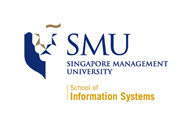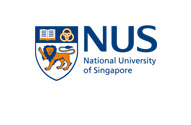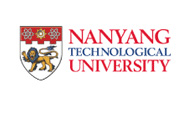- Home
- Accepted Papers
- Accepted Workshops
- Accepted Tutorials
- Conference Proceedings
- Awards
- Paper Award Nominees
- ACM SIGAI Autonomous Agents Research Award 2016
- 2015 IFAAMAS Victor Lesser Distinguished Dissertation Award
- 2016 IFAAMAS Influential Paper Award
- Attending AAMAS
- Registration
- Keynote Speakers
- Conference Program
- Program Booklet
- Presentation Sessions
- Poster Sessions
- Conference Mobile App
- Accommodation
- Visa Information
- Useful Tips
- Venue
- Banquet
- Invitation Letter
- Places of Interest
- Consent Form Bidding data
- Student Information
- Agents Summer School
- Doctoral Mentoring Program
- Scholarship / Travel Support
- Activities & Accomodation
- Robotics Summer School (June 2016)
- Committees
- Organizing Committee
- Senior Program Committee
- Program Committee
- Calls
- 2016 IFAAMAS Award for Influential Papers in Autonomous Agents and Multiagent Systems
- IFAAMAS-15 Victor Lesser Distinguished Dissertation Award
- ACM SIGAI Autonomous Agents Research Award 2016
- Papers
- Paper Submissions
- JAAMAS Presentation Track
- Workshop Proposals
- Tutorials
- Demos
- Exhibitions
- Policies
- Sponsors
Workshops Schedule
| May 9 | May 10 | ||||
|---|---|---|---|---|---|
| TUTORIAL | Morning | Afternoon | Morning | Afternoon | |
| T1: Automated Planning (http://ktiml.mff.cuni.cz/~bartak/AAMAS2016/) |
X | ||||
| T2: Decentralized Multiagent Systems | X | ||||
| T3: Generating Synthetic Populations for Social Modeling | X | ||||
| T4: Organ Exchanges: A Success Story of AI in Healthcare | X | ||||
| T5: Reinforcement Learning in Single- and Multi-Agent Settings (https://sites.google.com/site/aamas2016rltutorial) |
X | X | |||
| T6: The Sigma Cognitive Architecture and System (http://cogarch.ict.usc.edu/aamas-tutorial-2016/) |
X | ||||
| T7: The Internet of Things and Multiagent Systems (Half-Day) | X | ||||
T1. AUTOMATED PLANNING (HALF-DAY)
ORGANIZERS
Roman Barták (Charles University)
ABSTRACT
Action planning is a typical activity of an autonomous agent dealing with finding a plan---a sequence of actions---that leads to a given goal. The tutorial gives an introduction to classical planning methods. It explains the planning problem and its possible representations, gives a survey of major planning techniques, namely state-space planning, plan-space planning, planning with a planning graph, and planning by conversion to other formalisms (SAT and CP), and concludes with the description of possible extensions, some practical aspects, and recent trends.
T2. DECENTRALIZED MULTIAGENT SYSTEMS (HALF-DAY)
ORGANIZERS
Amit K. Chopra (Lancaster University),
Munindar P. Singh (North Carolina State University)
ABSTRACT
Modern IT applications involve multiple people and organizations who interact to exchange information and services. For example, healthcare applications involve patients, physicians, nurses, hospitals, pharmacies, and so on. Today such applications are conceptualized and designed as a single entity system, e.g., as a set of Web services. This tutorial will introduce decentralized multiagent systems (MAS) as a way of realizing modern IT applications. Specifically, the tutorial will introduce interaction protocols as the basic building block for such applications.
The tutorial will describe existing software engineering and artificial intelligence approaches and standards, including UML Sequence Diagrams, FIPA ACL, and multiagent systems programming. It will then introduce topics that specifically address decentralized MAS from the perspective of information modeling and asynchronous enactments, specifically, information-based protocols and commitment protocols. It will also introduce various correctness criteria relevant to such specifications. The tutorial will illustrate the concepts involved with a variety of examples, software demonstrations, and problem sets to be solved by the attendees during the tutorial.
Attendees will appreciate the theoretical foundations of decentralized MAS and learn how to apply interactions protocols toward engineering decentralized MAS. The tutorial builds upon the version presented at AAMAS 2015, where it attracted more than 50 attendees.
T3. GENERATING SYNTHETIC POPULATIONS FOR SOCIAL MODELING (HALF-DAY)
ORGANIZERS
Samarth Swarup,
Madhav V. Marathe (Virginia Tech)
ABSTRACT
Many emerging areas of MAS application are centered on social modeling, including computational sustainability and resilience, urban computing, disaster response, and more. Complex social systems require detailed, data-driven models at scale to enable forecasting, planning, and intervention modeling. The idea of synthetic population modeling, which emerged in transportation modeling and has since been applied to several domains including infrastructure modeling, computational epidemiology, and others, is an important methodology for modeling of complex social systems. This tutorial will introduce MAS researchers to the techniques for generating synthetic populations by integrating multiple sources of data, including census data, activity and time-use data, mobility data, and more. We will cover various learning and optimization methods that are necessary to this process. We will also describe various applications and provide pointers to the literature for further reading.
T4. ORGAN EXCHANGES: A SUCCESS STORY OF AI IN HEALTHCARE (HALF-DAY)
ORGANIZERS
John P. Dickerson,
Tuomas Sandholm (Carnegie Mellon University)
ABSTRACT
This tutorial covers past and current research in organ exchange, a method by which patients in need of a organ can swap willing but incompatible donors. Throughout, it also gives a higher-level overview of the steps taken to translate a purely academic idea into a large fielded health-care system. The tutorial focuses on the computational aspects of organ exchange, starting by introducing past research that has now been implemented in real-world kidney exchange (or deemed impractical and not yet fielded) and then by covering the current research problems available at the intersection of AI, optimization, and economics. It especially dives into the computational methods developed and used to solve extremely large discrete optimization problems that reflect kidney exchange, along with the interplay between modeling decisions, computational tractability, exchange efficiency, equity, dynamism in matching, and a variety of other real-world constraints and considerations. While we focus on kidney exchange, research toward exchanges for other organs such as livers and lungs, as well as cross-organ exchanges, will also be covered.
T5. REINFORCEMENT LEARNING IN SINGLE- AND MULTI-AGENT SETTINGS (FULL-DAY)
ORGANIZERS
Daan Bloembergen (University of Liverpool),
Tim Brys (Vrije Universiteit Brussel), and Ann Nowé (Vrije Universiteit Brussel)
ABSTRACT
Reinforcement learning (RL) is an important and fundamental topic within agent-based research, both in a single-agent setting, as well as in multi-agent domains (MARL). After giving successful tutorials on this topic at EASSS 2004 (the European Agent Systems Summer School), ECML 2005, ICML 2006, EWRL 2008, AAMAS 2009-2013, and ECAI 2013, with different collaborators, we now propose a revised and updated tutorial, covering both theoretical as well as practical aspects of single-agent and multi-agent RL.
Participants will be taught the basics of single-agent reinforcement learning and the associated theoretical convergence guarantees related to Markov decision processes. We will discuss how an agent’s learning can be improved by incorporating prior knowledge through reward shaping, and how to extend the RL framework to handle multiple objectives simultaneously. We then move from single-agent to multi-agent RL, and outline why convergence guarantees no longer hold in a setting where multiple agents learn. We will explain practical approaches on how to scale single agent reinforcement learning to these situations where multiple agents influence each other and introduce a framework, based on game theory and evolutionary game theory, that allows thorough analysis of the dynamics of multi-agent learning. Several research applications of MARL will be outlined in detail. The tutorial will include a practical hands-on session, where participants can experience the viability of reinforcement learning in several key application domains.
T6. THE SIGMA COGNITIVE ARCHITECTURE AND SYSTEM (HALF-DAY)
ORGANIZERS
Paul S. Rosenbloom,
Volkan Ustun (USC Institute for Creative Technologies)
ABSTRACT
Sigma (Σ) is a nascent cognitive system---i.e., the beginnings of an integrated computational model of intelligent behavior---built around an eponymous cognitive architecture (a hypothesis about the fixed structure underlying cognition). As such, it is intended ultimately to support the real-time needs of intelligent agents, robots and virtual humans. Its development is driven by four desiderata---grand unification, generic cognition, functional elegance, and sufficient efficiency---plus a unique blend of ideas from over thirty years of independent work in the areas of cognitive architectures and graphical models. Work to date on Sigma has covered aspects of learning and memory, perception and attention, reasoning and problem solving, speech and language, and social and affective cognition. It has also involved the development of multiple distinct types of intelligent agents and virtual humans. This tutorial covers the rationale behind Sigma, the basics of its design and operation, and a number of the results that have been generated to date with it.
T7. THE INTERNET OF THINGS AND MULTIAGENT SYSTEMS (HALF-DAY)
ORGANIZERS
Munindar P. Singh (North Carolina State University),
Amit K. Chopra (Lancaster University)
ABSTRACT
This tutorial introduces the Internet of Things (IoT), a rapidly expanding technology area, based on advances in embedded computing, communications, storage, and computing. This tutorial describes how ideas from artificial intelligence---specifically, multiagent systems---can support the core challenges of IoT once we get beyond the infrastructure. It also introduces the research advances needed in the relevant areas to help make the IoT practical.
The tutorial is presented at a senior undergraduate student level. It is accessible to developers from industry and to students. Typical attendees for our past tutorials have been researchers and practitioners from industry and government, developers, graduate and senior undergraduate students, and university faculty.









